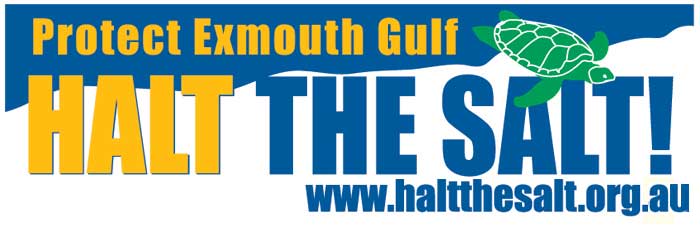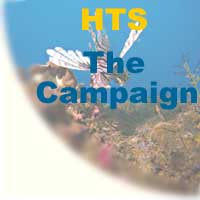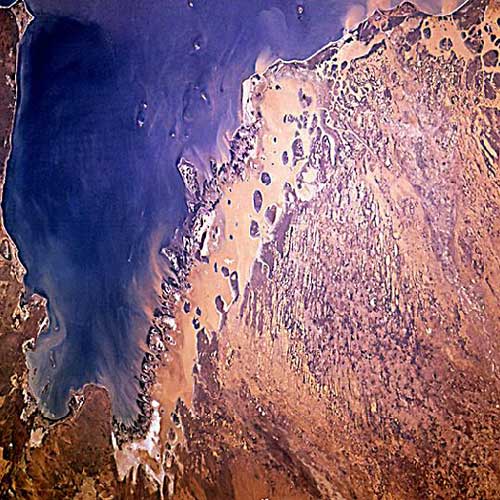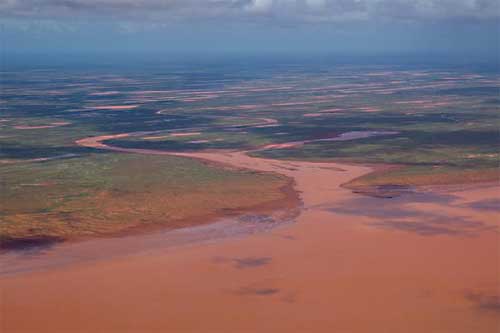|
|
 |
|
The Campaign - The Science
CYCLONE PANCHO HAS MADE THE CASEThe Strait’s Salt Project proposed for the eastern side of Exmouth Gulf is now with Environment Minister for a decision after a record 12 months with the Appeal’s Convenor. This project proposed to build a massive solar salt pond complex on the supra-tidal flat between the Gulf’s unique sub-tropical mangrove system and the arid hinterland. This complex would effectively block the sheet flow of floodwaters from the catchment to the biologically productive waters of Exmouth Gulf. In its Public Environmental Review the proponents erected what could be termed the ‘vacant habitat hypothesis’. The proposition was that bare sediment of the supratidal flat was an empty ecosystem with no effective hydrological connection (surface or groundwater) with the mangroves or the waters of the Gulf. According to the proponent’s modeling flood-out events across the supra-tidal flat were so infrequent that they were ecologically insignificant and that the productive Yannarie Wetland system, with its mangroves, algal mats and sub-tidal banks, got all its nutrients from the ocean, perhaps augmented by an upwelling area north of NW Cape. Placing a barrier across the flat was therefore totally benign. During the PER phase CCWA citizen scientists, the North-west Research Association and M.G. Kailis carried at our stable-isotope snapshot survey of the Gulf. The results showed that the dominant producers of the productive inner and eastern Gulf were seaweeds and seagrasses and that the nitrogen feeding these plants was not coming primarily from the ocean or an upwelling. Pulses of terrestrial nutrients were likely to be important in driving the productivity cycles that had been observed historically in the seagrass and prawn catches. Contrary to the proponents ‘modeling ‘ two cyclonic events have been observed to produce a hydrological connection between the eastern catchment and the Gulf waters in the recent past, Cyclone Bobby in February 1995 and Cyclone Pancho in March 2008. Two others, Vance in 1999 and Steve in 2000, may also have done so but there are no records of what happened across the supra-tidal flat during those events. In March 2008 Cyclone Pancho dumped heavy rainfall on the Gascoyne Region, Learmonth received 119mm in the peak 24 hour period. An aerial survey organized by the Halt the Salt campaign within days of the cyclone passage revealed a complete hydrological connection with floodwaters discharging through the many mangrove line distributor channels. This provided a well timed opportunity to test the ‘vacant habitat hypothesis’. At the Australian Marine Sciences Association annual conference early in July 2009 Dr Catherine Lovelock from the Centre for Marine Studies, University of Queensland presented a paper on nutrient limitation in the mangroves of Exmouth Gulf. Dr Lovelock found that a period of nitrogen and phosphorous limitation on mangrove trees in the Yannarie wetland system since Cyclone Steve was relieved by Cyclone Pancho. It was highly probable that these nutrients were carried from the catchment across the supra-tidal flat either dissolved in floodwaters or incorporated in terrestrial sediments. The results of the most recently reported scientific research would appear to be another rejection of the ‘vacant habitat hypothesis’. If the Minister for the Environment decides to approve the Yannarie Solar Project it will not be with the science on her side.
|

![]()

![]()

Halt the Salt Campaign - Web Manager:
Dave Graham, Web hosting: ozup.com
Images copyright Wags and
Kelly
Halt the Salt Privacy statement





